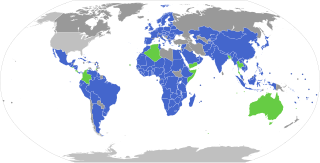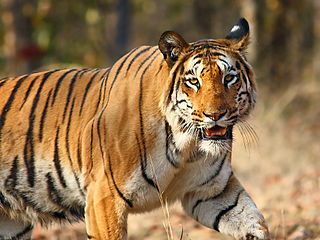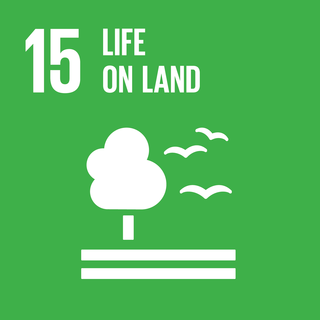Related Research Articles

The Convention on Biological Diversity (CBD), known informally as the Biodiversity Convention, is a multilateral treaty. The convention has three main goals: the conservation of biological diversity ; the sustainable use of its components; and the fair and equitable sharing of benefits arising from genetic resources. Its objective is to develop national strategies for the conservation and sustainable use of biological diversity, and it is often seen as the key document regarding sustainable development.

The Cartagena Protocol on Biosafety to the Convention on Biological Diversity is an international agreement on biosafety as a supplement to the Convention on Biological Diversity (CBD) effective since 2003. The Biosafety Protocol seeks to protect biological diversity from the potential risks posed by genetically modified organisms resulting from modern biotechnology.

Bioprospecting is the exploration of natural sources for small molecules, macromolecules and biochemical and genetic information that could be developed into commercially valuable products for the agricultural, aquaculture, bioremediation, cosmetics, nanotechnology, or pharmaceutical industries. In the pharmaceutical industry, for example, almost one third of all small-molecule drugs approved by the U.S. Food and Drug Administration (FDA) between 1981 and 2014 were either natural products or compounds derived from natural products.
The International Treaty on Plant Genetic Resources for Food and Agriculture, is a comprehensive international agreement in harmony with the Convention on Biological Diversity, which aims at guaranteeing food security through the conservation, exchange and sustainable use of the world's plant genetic resources for food and agriculture (PGRFA), the fair and equitable benefit sharing arising from its use, as well as the recognition of farmers' rights. It was signed in 2001 in Madrid, and entered into force on 29 June 2004.
Rio Convention relates to the following three conventions, which were agreed at the Earth Summit held in Rio de Janeiro in June 1992.

The International Union for the Protection of New Varieties of Plants or UPOV is a non-United Nations sui generis intergovernmental organization with headquarters in Geneva, Switzerland. The current Secretary-General of UPOV is Daren Tang. The expression UPOV Convention also refers to one of the three international legal instruments that relate to the Union, namely the 1991 Act of the UPOV Convention, 1978 Act of the UPOV Convention and 1961 Act of the UPOV Convention with Amendments of 1972
Traditional knowledge (TK), indigenous knowledge (IK) and local knowledge generally refer to knowledge systems embedded in the cultural traditions of regional, indigenous, or local communities. According to the World Intellectual Property Organization (WIPO) and the UN, traditional knowledge and traditional cultural expressions (TCE) are both types of indigenous knowledge.

The United Nations Forum on Forests (UNFF) is a high-level intergovernmental policy forum. The forum includes all United Nations member states and permanent observers, the UNFF Secretariat, the Collaborative Partnership on Forests, Regional Organizations and Processes and Major Groups.

Natural Justice: Lawyers for Communities and the Environment is a non-profit organisation based in Cape Town, South Africa, with additional offices in Malaysia, India, and New York City. It takes its name from the legal principle of natural justice and it works at the local level to legally empower communities to pursue social and environmental justice. It also works at the national and international levels to promote the full and effective implementation of environmental laws and policies such as the Convention on Biological Diversity.
Livestock Keepers' Rights are a bundle of rights that would support the survival of small-scale livestock keepers such as pastoralists, smallholders and family farms in a general policy environment that favours large-scale industrial modes of livestock production. In the context of the current anti-livestock agenda and the claim by commercial interests that livestock will be eliminated by 2035, they are gaining added traction.

The Nagoya Protocol on Access to Genetic Resources and the Fair and Equitable Sharing of Benefits Arising from their Utilization to the Convention on Biological Diversity, also known as the Nagoya Protocol on Access and Benefit Sharing (ABS) is a 2010 supplementary agreement to the 1992 Convention on Biological Diversity (CBD). Its aim is the implementation of one of the three objectives of the CBD: the fair and equitable sharing of benefits arising out of the utilization of genetic resources, thereby contributing to the conservation and sustainable use of biodiversity. It sets out obligations for its contracting parties to take measures in relation to access to genetic resources, benefit-sharing and compliance.
The Maya ICBG bioprospecting controversy took place in 1999–2000, when the International Cooperative Biodiversity Group led by ethnobiologist Dr. Brent Berlin was accused of engaging in unethical forms of bioprospecting (biopiracy) by several NGOs and indigenous organizations. The ICBG had as its aim to document the biodiversity of Chiapas, Mexico and the ethnobotanical knowledge of the indigenous Maya people – to ascertain whether there were possibilities of developing medical products based on any of the plants used by the indigenous groups.

The National Biodiversity Authority (NBA) is a statutory autonomous body under the Ministry of Environment, Forests and climate change, Government of India established in 2003 to implement the provisions under the Biological Diversity Act, 2002, after India signed Convention on Biological Diversity (CBD) in 1992.
The Biological Diversity Act, 2002 is an Act enacted by the Parliament of India for the preservation of biological diversity in India, and provides mechanism for equitable sharing of benefits arising out of the use of traditional biological resources and knowledge. The Act was enacted to meet the obligations under the Convention on Biological Diversity (CBD), because India is a party of the convention {meeting}.

Animal genetic resources for food and agriculture (AnGR) are a subset of genetic resources and a specific element of agricultural biodiversity. The term animal genetic resources refers specifically to the genetic resources of avian and mammalian species, which are used for food and agriculture purposes. Further terms referring to AnGR are "farm animal genetic resources" or "livestock diversity".
Plant genetic resources are plant genetic materials of actual or potential value. They describe the variability within plants that comes from human and natural selection over millennia. Their intrinsic value mainly concerns agricultural crops.
The Commission on Genetic Resources for Food and Agriculture of the Food and Agriculture Organization of the United Nations (FAO) is an intergovernmental body that addresses issues specifically related to the management of biodiversity of relevance to food and agriculture. It was established in 1983 as the Commission on Plant Genetic Resources for Food and Agriculture. In 1995, the mandate of the Commission was extended to cover all components of biodiversity for food and agriculture and its name was changed to its current version. Its membership comprises 178 countries and the European Union.
Genetic resources means genetic material of actual or potential value where genetic material means any material of plant, animal, microbial or other origin containing functional units of heredity... Genetic resources thus refer to the part of genetic diversity that has or could have practical use, such as in plant breeding. The term was introduced by Otto Frankel and Erna Bennett for a technical conference on the exploration, utilization and conservation of plant genetic resources, organized by the Food and Agriculture Organisation (FAO) and the International Biological Program (IBP), held in Rome, Italy, 18–26 September 1967.

Sustainable Development Goal 15 is about "Life on land." One of the 17 Sustainable Development Goals established by the United Nations in 2015, the official wording is: "Protect, restore and promote sustainable use of terrestrial ecosystems, sustainably manage forests, combat desertification, and halt and reverse land degradation and halt biodiversity loss". The Goal has 12 targets to be achieved by 2030. Progress towards targets will be measured by 14 indicators.
References
- ↑ Kabir Bavikatte & Daniel F. Robinson. Towards a People's History of the Law: Biocultural Jurisprudence and the Nagoya Protocol on Access and Benefit Sharing. 7/1 Law, Environment and Development Journal (2011), p 35, available at: http://www.lead-journal.org/content/11035.pdf.
- ↑ Louafi, Sélim and Jean-Frédéric Morin, International governance of biodiversity: Involving all the users of genetic resources, IDDRI, 2004, https://www.academia.edu/3809935/Louafi_S._and_J-F_Morin
- ↑ Article 5. The Nagoya Protocol. Accessed from: http://www.cbd.int/abs/text/default.shtml.